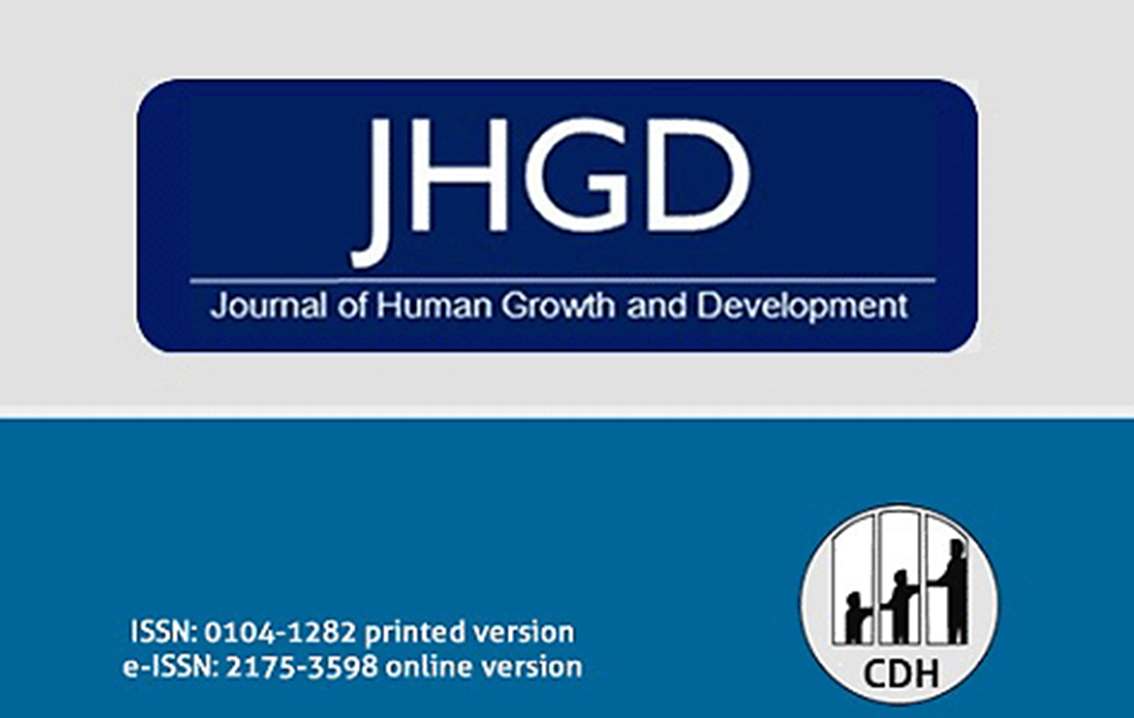Cannabis: from plant condemned by prejudice to one of the greatest therapeutic options of the century
DOI:
https://doi.org/10.7322/jhgd.v30.9977Keywords:
Cannabis sativa, Cannabinoids, Endocannabinoid System, CBD, Therapeutic optionAbstract
Cannabis sativa has a fascinating history and has been used by mankind for millennia. Many societies such as Greek, Roman, Chinese, African, Indian and Arabic take advantage of the plant's qualities, which are consumed as food, medicine, fuel, fibers or tobacco. The first reference found related to the therapeutic use of the plant data from 2700 B.C. and is present in the pharmacopoeia of the Chinese Emperor Shen-Nung, where this plant was recommended in the treatment of malaria, rheumatic pain, in irregular and painful menstrual cycles. The book “De Matéria Médica”, written by the doctor Pedânio Dioscórides considered thefounder of pharmacology, exposes Cannabis as one of the natural substances that can relieve inflammatory pain. In Brazil, African slaves brought a cannabis during the colonial period, around 1549. Then, its use spread quickly among black slaves and Indians, who started to cultivate it. Once the plant was popularized among French intellectuals and English doctors in the Indian imperial army, it started to be considered in our country as an excellent medicine for men, until it was suppressed by the police authorities in the 1930s. Only 60 years later important findings were highlighted around Cannabis with the System Endocannabinoid and its receptors, neurotransmitters such as anandamide and 2-AG, revolutionizing the understanding of molecular signaling that modulates pain and analgesia, inflammation, appetite, gastrointestinal motility and sleep cycles, immune cell activity and hormones among others.We are in front of a huge revolution in the therapeutic area, in which phytocabinoids represent one of the great therapeutic options of the century. We need a widespread disclosure that CBD is not marijuana and that its use for recreational purpose has nothing to do with the use of medical cannabis. Scientific research is seriously committed to the use of the substance in various pathologies. The role of information is absolute, being the main tool to clarify a society.
Downloads
References
2. Serviço de Intervenção nos Comportamentos Aditivos e nas Dependências (SICAD). Serviços de Monitorização e Informação. Relatório Anual 2016: a situação do país em matéria de drogas e toxicodependências. Divisão de Estatística e Investigação, 2017.
3. Riddle JM. Dioscorides on Pharmacy and Medicine. Austin: University of Texas Press, 1985.
4. Carlini EA. A história da maconha no Brasil. J Bras Psiquiatr. 2006;55(4): 314-17. DOI: http://doi.org/10.1590/S0047-20852006000400008
5. Gaoni Y, Mechoulam R. Isolation, Structure, and Partial Synthesis of an Active Constituent of Hashish. J Am Chem Soc. 1964;86(8):1646-7. DOI: https://doi.org/10.1021/ja01062a046
6. Hassanzadeh P. Discovery of the endocannabinoid system: a breakthrough in neuroscience. Arch Neurosci. 2014;1(3):e15030. DOI: https://doi.org/10.5812/archneurosci.15030
7. Fonseca FR, Del Arco I, Bermudez-Silva FJ, Bilbao A, Cippitelli A, Navarro M. The endocannabinoid system: physiology and pharmacology. Alcohol Alcohol. 2005;40(1):2–14. DOI: https://doi.org/10.1093/alcalc/agh110
8. Heifets BD, Castillo PE. Endocannabinoid Signaling and Long-Term Synaptic Plasticity. Annu Rev Physiol. 2009;71:283-306. DOI: https://doi.org/10.1146/annurev.physiol.010908.163149
9. Castillo PE, Younts TJ, Chávez AE, Hashimotodani Y. Endocannabinoid signaling and synaptic function. Neuron. 2012;76(1):70-81. DOI: https://doi.org/10.1016/j.neuron.2012.09.020
10. Ligresti A, Petrocellis L, Di Marzo V. From Phytocannabinoids to Cannabinoid Receptors and Endocannabinoids: Pleiotropic Physiological and Pathological Roles Through Complex Pharmacology. Physiol Rev. 2016;96(4):1593-659. DOI: https://doi.org/10.1152/physrev.00002.2016
11. Lee MA. The Discovery of the Endocannabinoid System. [cited 2020 Feb 20] Available from: https://www.beyondthc.com/wp-ontent/uploads/2012/07/eCB SystemLee.pdf
12. Russo EB. Clinical Endocannabinoid Deficiency Reconsidered: Current Research Supports the Theory in Migraine, Fibromyalgia, Irritable Bowel, and Other Treatment-Resistant Syndromes. Cannabis Cannabinoid Res. 2016;1(1):154-65. DOI: https://doi.org/10.1089/can.2016.0009
13. Smith SC, Wagner MS. Clinical endocannabinoid deficiency (CECD) revisited: can this concept explain the therapeutic benefits of cannabis in migraine, fibromyalgia, irritable bowel syndrome and other treatment-resistant conditions? Neuro Endocrinol Lett. 2014;35(3):198-201.
14. Black N, Stockings E, Campbell G, Tran LT, Zagic D, Hall WD, et al. Cannabinoids for the treatment of mental disorders and symptoms of mental disorders: a systematic review and meta-analysis. Lancet Psychiatry. 2019;6(12): 995-1010. DOI: https://doi.org/10.1016/S2215-0366(19)30401-8
15. Allan GM, Finley CR, Ton J, Perry D, Ramji J, Crawford K, et al. Systematic review of systematic reviews for medical cannabinoids: Pain, nausea and vomiting, spasticity, and harms. Can Fam Physician. 2018;64(2):e78-94.
16. Armour M, Sinclair J, Chalmers KJ, Smith CA. Self-management strategies amongst Australian women with endometriosis: a national online survey. BMC Complement Altern Med. 2019;19(1):17. DOI: https://doi.org/10.1186/s12906-019-2431-x
17. Agarwal R, Burke SL, Maddux M. Current state of evidence of cannabis utilization for treatment of autism spectrum disorders. BMC Psychiatry. 2019;19 (328). DOI: https://doi.org/10.1186/s12888-019-2259-4
18. Capasso R, Borrelli F, Aviello G, Romano B, Scalisi C, Capasso F, et al. Cannabidiol, extracted from Cannabis sativa, selectively inhibits inflammatory hypermotility in mice. Br J Pharmacol. 2008;154(5):1001-8. DOI: https://doi.org/10.1038/bjp.2008.177
19. Iuvone T, Esposito G, De Filippis D, Scuderi C, Steardo L. Cannabidiol: a promising drug for neurodegenerative disorders?. CNS Neurosci Ther. 2009;15(1):65-75. DOI: https://doi.org/10.1111/j.1755-5949.2008.00065.x
20. Fernández-Ruiz J, Sagredo O, Pazos MR, García C, Pertwee R, Mechoulam R, et al. Cannabidiol for neurodegenerative disorders: important new clinical applications for this phytocannabinoid?. Br J Clin Pharmacol. 2013;75(2):323-33. DOI: https://doi.org/10.1111/j.1365-2125.2012.04341.x
21. Valdeolivas S, Satta V, Pertwee RG, Fernández-Ruiz J, Sagredo O. Sativex-like combination of phytocannabinoids is neuroprotective in malonate-lesioned rats, an inflammatory model of Huntington's disease: role of CB1 and CB2 receptors. ACS Chem Neurosci. 2012;3(5):400-6. DOI: https://doi.org/10.1021/cn200114w
22. Shannon S, Lewis N, Lee H, Hughes S. Cannabidiol in Anxiety and Sleep: A Large Case Series. Perm J. 2019;23:18-041. DOI: https://doi.org/10.7812/TPP/18-041






